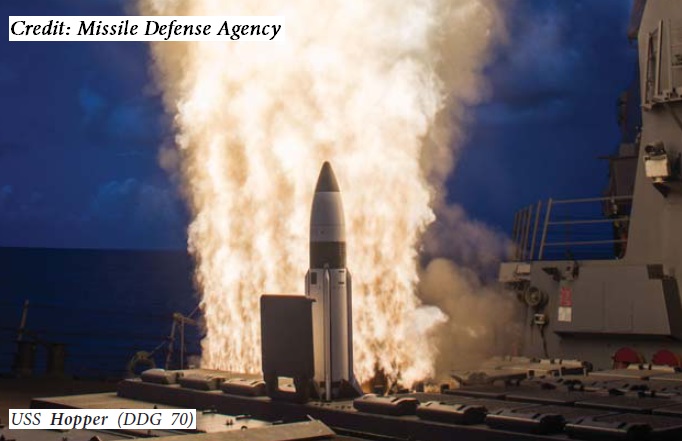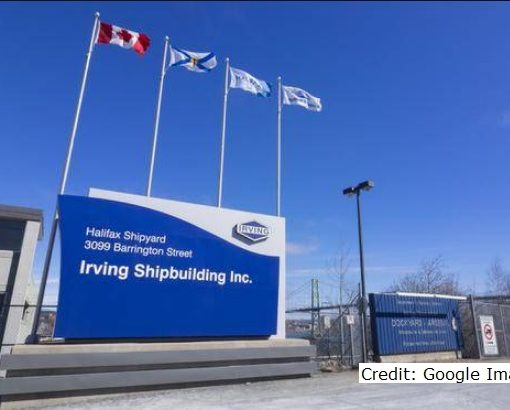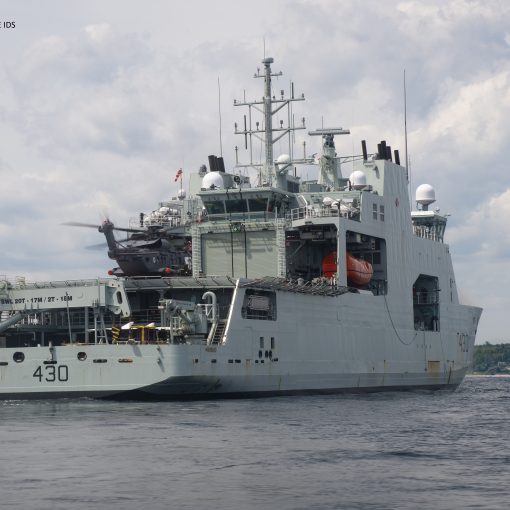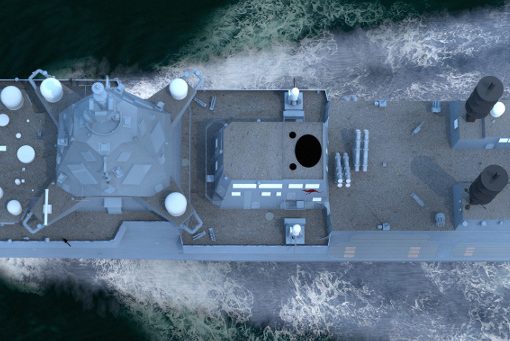In the 04 October 2011 post by ‘Galrahn’, entitled “Crisis Time for U.S. Seapower”, the author asked this question: “Will the navy also retire the first 8 Ticonderoga-class cruisers because they lack the radar for BMD?” The question is poignant, because it shows the value that the U.S. government attaches to the anti-ballistic missile capability and how ready they may be to shed warships of otherwise superlative quality.
Galrahn’s question does not seem so improbable when considered in conjunction with the recent Announcement by U.S. Secretary of Defense Leon Panetta on stationing Aegis-equipped ships at Rota, Spain. On 05 October 2011, Mr. Panetta, supported by Spanish President Zapatero and NATO Secretary-General Rasmussen, announced the American plan to base four Aegis-equipped ships at Rota, “boosting combined naval capabilities in the Mediterranean, and enhancing our ability to ensure the security of this vital region. This relocation of assets takes place as part of the United States ongoing effort to better position forces and defensive capabilities in coordination with our European allies and partners.”
Continuing, Panetta said, “These ships will also support NATO’s critical efforts to build effective missile defense. Alongside important agreements that were recently concluded with Romania, Poland, and Turkey, Spain’s decision represents a critical step in implementing the European Phased Adaptive Approach, as our leaders agreed to in Lisbon. For its part, the United States is fully committed to building a missile defense capability for the full coverage and protection of all our NATO European populations, their territory and their forces against the growing threat posed by ballistic missiles.”
Aegis-system ships are found within the Ticonderoga-class cruisers and Arleigh Burke-class destroyers. The first five ships of the Ticonderoga-class, which began to enter service in 1983, were judged too expensive to upgrade their radars, control systems and missiles to make them BMD capable. As of November 2010, five cruisers and 16 destroyers had been upgraded to make them BMD capable. The Congressional Research Service Report (RL33745) “Navy Aegis Ballistic Missile Defense Program” reports that the goal is to have 24 ships upgraded by the end of 2012; 27 around 2013 and 38 at the end of FY 2015. The plan also calls for an increasing portion of the navy’s BMD-capable Aegis ships to be equipped with newer and more capable versions of the Aegis BMD system.
In addition to upgrades to the SPY-1 radar, the CRS report describes the software updates needed to make the Aegis system BMD-capable: The current BMD system is called version 3.6.1. Version 4.0.1 is now being implemented. Subsequent versions will be called 5.0, 5.1, and 5.2. The reports also provides cost figures for upgrading the Aegis control system: “an in-service Aegis ship with no BMD capability can be given a 3.6.1 BMD capability for about $10 million to $15 million, or a 4.0.1 BMD capability for about $53 million to $55 million. An in-service ship with a 3.6.1 BMD capability can be upgraded to 4.0.1 for about $45 million, and that an in-service ship with a 5.0 capability could be upgraded to 5.1 for about $23 million.”
Two versions of the 'Standard' missile can be used for BMD: “SM-3 and the Standard Missile-2 Block IV (SM-2 Block IV). The SM-3 is designed to intercept ballistic missiles above the atmosphere, in the midcourse phase of an enemy ballistic missile’s flight. It is equipped with a ‘hit-to-kill’ warhead, called a kinetic warhead that is designed to destroy a ballistic missile’s warhead by colliding with it. The SM-2 Block IV is designed to intercept ballistic missiles inside the atmosphere, during the terminal phase of an enemy ballistic missile’s flight. It is equipped with a blast fragmentation warhead. … SM-3 Block IA missiles have a unit procurement cost of about $9 million to $10 million.” Follow-on missiles will have a more powerful booster motor and will cost approximately $15 million each.
The long-held and often-quoted criticism of BMD systems has been that the problem of ‘shooting a bullet with a missile’ is insurmountable. Recent test results of the Aegis system, cited in the CRS report, indicate that the problems were not as great as previously thought: “Since January 2002, the Aegis BMD system has achieved 16 successful exo-atmospheric intercepts in 20 attempts using the SM-3 missile (including two successful intercepts in three attempts by Japanese Aegis ships), and three successful endo-atmospheric intercepts in three attempts using the SM-2 Block IV missile, making for a combined total of 19 successful intercepts in 23 attempts.” With a combined accuracy rate of 82.6%, the main obstacle now seems to be one of cost.
Galrahn’s question, therefore, really wonders whether fewer of the older Aegis ships will be upgraded to make them BMD-capable (eight, instead of the first five Ticonderoga-class cruisers). In times of recession and reduced funding, these are the kinds of hard decisions that have to be made. In the American case, they have a steady production line that will eventually make up the difference. In the meantime, they have allies that are moving to add BMD capabilities that will augment the American’s.
Aegis technology is proliferating. The report states, “sales of the Aegis system to allied countries began in the late 1980s. Allied countries that now operate, are building, or are planning to build Aegis-equipped ships include: Japan, South Korea, Australia, Spain, and Norway. The Norwegian ships are somewhat smaller than the other Aegis ships, and, consequently, carry a reduced-size version of the Aegis system that includes a smaller, less-powerful version of the SPY-1 radar.” The move to base BMD-capable destroyers in Rota provides an opportunity for the American, Spanish and Norwegian navies to train collaboratively, which will be of enormous value to the Europeans, especially in the early stages of development.
The inclusion of traditional allies of Canada and other Commonwealth countries in the Aegis ‘club’ raises the question of whether or not new combatants produced under the NSPS should be BMD-capable. The opening of northern waters means that defensive deployment of a proven, mobile system is a possibility for Canada. The SPY-1 radar in the Aegis system provides the type of surveillance capability needed, and the weapon that goes with it makes the strongest sovereignty assertion possible. Moreover, in times of crisis, the inherent mobility of seapower means it can be deployed wherever needed. Norway and Australia’s inclusion in the BMD group indicate that such capabilities are within the means of Canada.
One thing is certain; the $25B provided in the NSPS will not cover a one-for-one replacement of the navy’s existing 15 destroyers and frigates plus the six to eight Arctic and Offshore Patrol Ships. The government’s priority is clear: build the AOPSs first. There will not be a way to save on the first component of the NSPS in order to spend on the second. With too few funds for a uniform level of capability and the numbers fixed by the shipbuilding strategy, only two options remain: a high-low split within the numbers combatants authorized by the strategy, with the majority being smaller and simpler ships; or a uniform fleet type for size but with many built following a ‘fitted for but not with’ plan that provides a high-low mix without physical differentiation. If an Aegis capability is contemplated, it will assure a high-low mix that will be of significant diplomatic and military value. If it is not contemplated, and one wonders why it would not be given the proliferation of the Aegis technology in response to the perceived BMD threat, it is a sign the navy is clinging desperately to its old and unaffordable fleet model.





